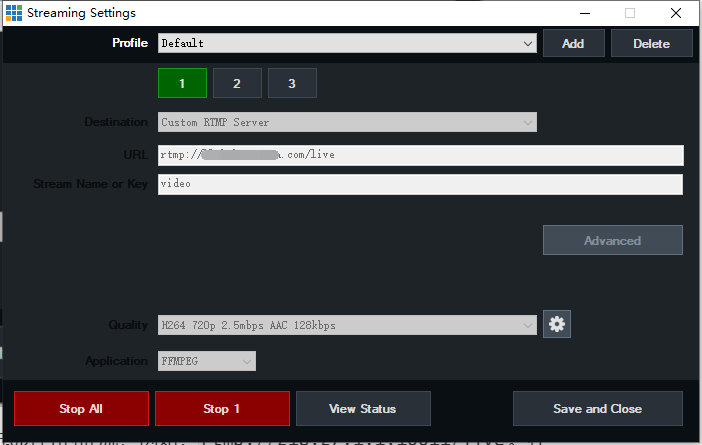一、使用软件
使用的推流软件为vmix,这里个软件是收费的,如果需要破解的版本,可以来这里下载rar压缩包。
链接:https://pan.baidu.com/s/1bG5vWb_GDLMCd9SUE0uRXw
提取码:milu
软件安装和使用的教程里面都有。
二、SRS相关命令
定位目录:
[root@localhost /]# cd /usr/local/srs-develop/trunk [root@localhost trunk]#找到配置文件
[root@localhost trunk]# vim conf/http.flv.live.conf修改好配置文件之后,使用命令停止srs
[root@localhost trunk]# ./etc/init.d/srs stop Stopping SRS(pid 19928)... [ OK ] SRS stopped by SIGTERM [ OK ]重新启动SRS
[root@localhost trunk]# ./objs/srs -c conf/http.flv.live.conf [2021-11-25 14:48:39.999][Trace][587][0] XCORE-SRS/4.0.29(Leo) [2021-11-25 14:48:39.999][Trace][587][0] config parse complete [2021-11-25 14:48:40.000][Trace][587][0] write log to file ./objs/srs.log [2021-11-25 14:48:40.000][Trace][587][0] you can: tailf ./objs/srs.log [2021-11-25 14:48:40.000][Trace][587][0] @see: https://github.com/ossrs/srs/wiki/v1_CN_SrsLog [root@localhost trunk]#查看SRS状态
[root@localhost trunk]# ps -ef | grep srs root 590 1 0 14:48 pts/1 00:00:00 ./objs/srs -c conf/http.flv.live.conf root 710 2346 0 14:49 pts/1 00:00:00 grep --color=auto srs [root@localhost trunk]#三、配置文件
# the config for srs to remux rtmp to flv live stream. # @see https://github.com/ossrs/srs/wiki/v2_CN_DeliveryHttpStream # @see full.conf for detail config. listen 8201; max_connections 1000; http_server { enabled on; listen 8082; dir ./objs/nginx/html; } vhost __defaultVhost__ { http_remux { enabled on; mount [vhost]/[app]/[stream].flv; hstrs on; } # hls设置 hls{ enabled on; hls_path ./objs/nginx/html; hls_fragment 10; hls_window 60; } }其中
8201为推流端口,8082为接收端口
四、NAT映射
这里的8201与8082分别做了NAT映射
8201 → 1935
8082 → 10034
1935为rtmp默认的外网端口,可以省略不写
五、推流地址格式
这里使用的是vmix进行推流,红色表示成功。

小贴士:(推流地址格式的演变历程)
在之前的开发中,我们使用的是**外网IP+外网端口**的形式进行的推流,例如:rtmp://218.27.1.1:10011/live。
在经过之后的研究发现,可以用域名来代替,所以就变成了**域名+外网端口**的形式进行推流,例如:rtmp://milumilu.com:10011/live。
但是如果不想要端口号的出现怎么办?这就难倒我们了。
就在我们一筹莫展,无从下手的时候,我们得知了1935的存在。这就像是80的端口一样,是可以省略不写的。
所以,最终的结果,就是可以见到的上图样式了。例如:rtmp://milumilu.com/live

